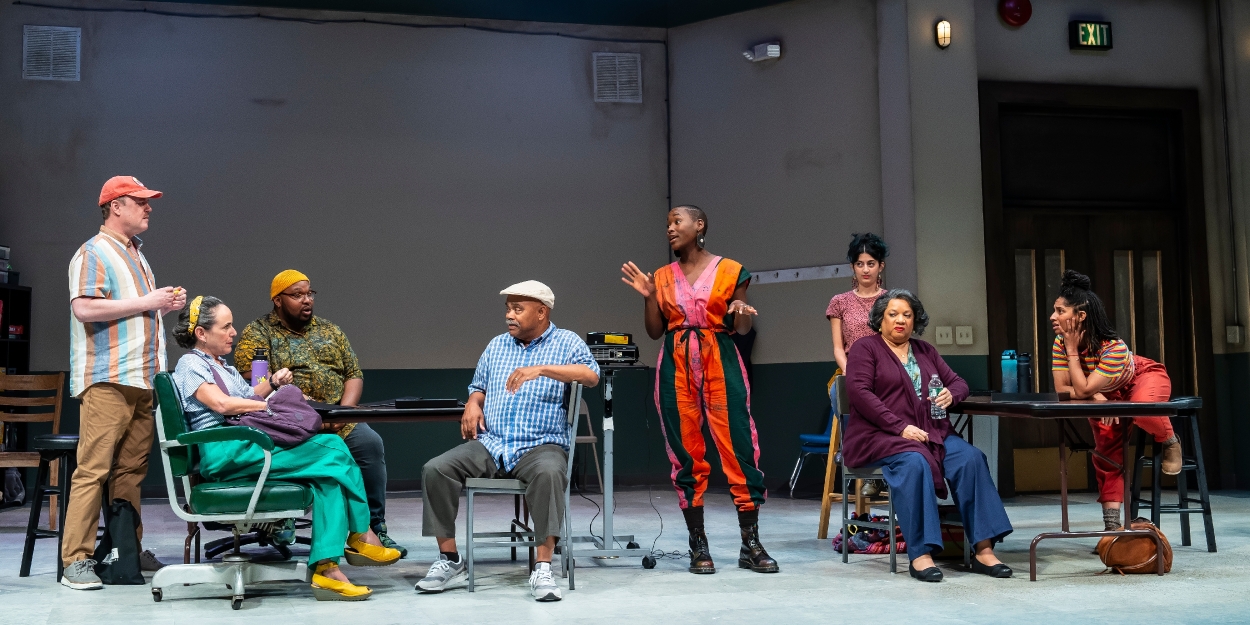Review: SOMETHING MOVING: A MEDITATION ON MAYNARD at Ford's Theatre
Atlanta's first Black mayor celebrated but not included in new play

There may be no better town for political drama than Washington, and no theater more historically consequential than Ford’s Theatre, where Lincoln was assassinated 158 years ago.
It’s the perfect place, then, for a play that marks the 50th anniversary of another significant political event — the election of the first Black mayor of a major city in the American South.
Maynard Jackson’s triumph in Atlanta is being heralded with a world premiere play, not in Atlanta, where he served three terms, but in the nation’s capital, at Ford’s.
A product of The Ford’s Theatre Legacy Commissions that received a developmental workshop and reading at the start of this year, “Something Moving: A Meditation on Maynard” has posters showing the youthful, gregarious politician in his prime, full of charisma. From it, viewers may be looking forward to see an actor fill him out fully on stage.
It’s a surprise, then, that the closest we see Jackson depicted in “Something Moving” is through a slide projection. It’s an even more surprising choice considering playwright Pearl Cleage, whose work includes “Flyin’ West” and “Blues for an Alabama Sky,” once worked for Jackson as his speechwriter and press secretary.
This close working knowledge would have presumably brought some personal insights, not to mention the opportunity for Cleage to revive some of the very speeches she wrote for him decades before.
Instead, her play steps back to introductory levels, specifically an imagined rehearsal for a planned 50th anniversary production to mark the historic election. Some of the younger people taking part need to be reminded who Jackson was. One thought they were talking about Michael Jackson; and another pulls out his phone to ask Siri to get the lowdown.
We get the historical details largely from the slideshow and the organizer behind the production, who has pretty long soliloquies as the production begins. She’s portrayed by Billie Kirshawn, who looks a bit young to have remembered events from half a century past.
She doesn’t have the title of director or producer for the show-within-a-show. Instead, she’s known as The Witness, who gets to hear the stories of Atlantans and how the election affected them. Those roles are played by the nine assembled actors, who don’t have names either, but are instead called Citizen 1, Citizen 2 and so on — citizen being the highest calling of a person, we are told (though having a name is a pretty good thing to have, too).
The nine begin their roles by speaking from a script in that explanatory cadence of one person ending another person’s sentence and everybody facing the audience — the kind of format parodied in “Saturday Night Live” sketch “High School Theatre Show.” The intent, though, is likely to have been closer to Thornton Wilder, as The Witness keeps dropping the phrase “our town” (even though Atlanta has long since become a city).
Despite best intentions, people fall into stereotypes as they become the characters they talk about — the older man taking about being around at the time; a younger man ending every interaction with a complicated handshake or high five, the white folks getting the lines about not wanting to talk about racial inequalities; and the Native American, Asian American and Latina cast members each representing with their own moments.
Standouts among the cast of all DMV-locals include Kim Bey in a variety of roles, from indignant maid to elder supporter thrilled to see a Black man sitting at the mayor’s desk. And Constance Swain adds extra energy and verve every time she has a line.
There are plenty of moments in director Seema Sueko’s production when we feel the civic and cultural pride of Jackson’s success, though his initial election night triumph isn’t built up as much as it could have been. Things are chiefly upbeat, though (as one might expect from a commissioning theater where Jackson’s daughter is on the board of trustees).
Among the challenges mentioned during his administration are a sanitation strike and the Atlanta child killings in 1979-80 (but not the firing of a white police chief that caused some racial pushback).
The set (by Milagros Ponce de León) is a classroom of a school that’s been converted to an arts center, which is a good reputation of “Something Moving” as well: an educational presentation that hopes to turn into an artistic venture. Lighting (by Jeanette Oi-Suk Yew) adapts the classroom atmosphere such that disco lights pulse when Jackson visits a gay bar in one scene.
We learn that following Jackson’s retirement from office in 1982, he was succeeded by Andrew Young — whose life would make its own interesting play, if he was allowed to be in it. As it is, the only authentic political voice heard in the play was another surprise — the former Georgia Rep. Stacey Abrams, in a recorded message, asking viewers to silence their cell phones at the show’s start.
Running time: About 90 minutes.
Photo credit: Tom Story, Susan Rome, Shaquille Stewart, Doug Brown, Billie Krishawn, Shubhangi Kuchibhotla, Kim Bey, and Constance Swain in “Something Moving: A Meditation on Maynard.” Photo by Scott Suchman.
“Something Moving: A Meditation on Maynard” runs through Oct. 15 at Ford’s Theatre, 511 10th Street NW. Tickets online.
Reader Reviews
Videos

